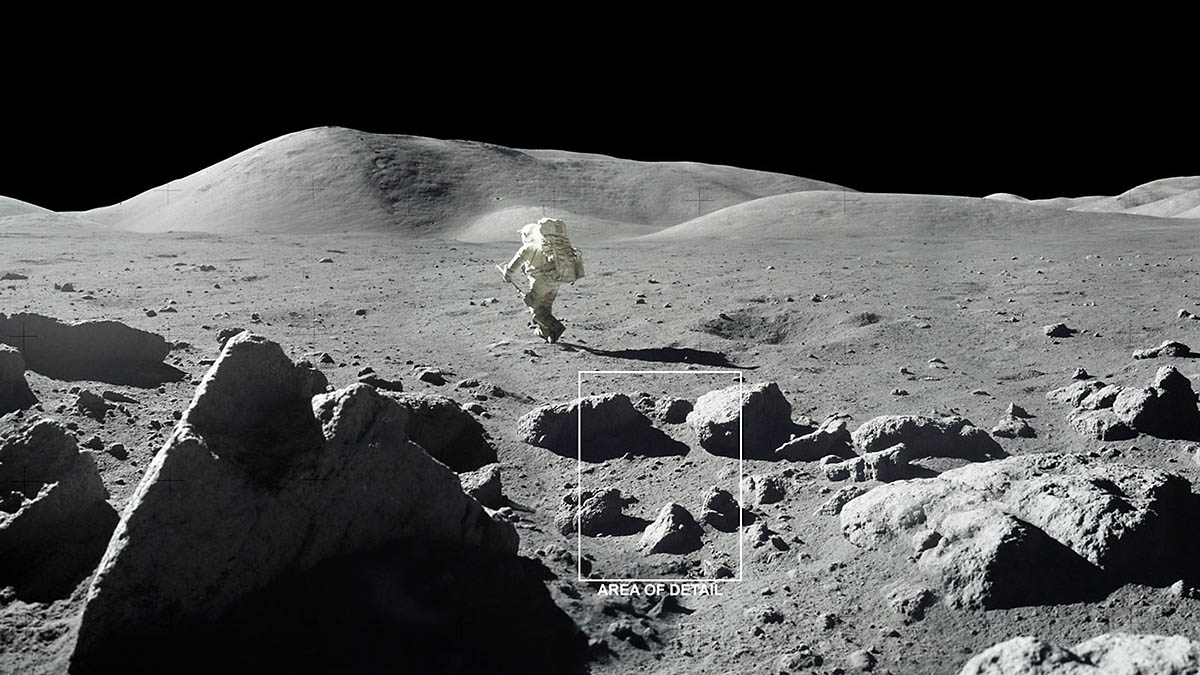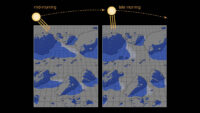The Moon is covered with craters and rocks, creating a surface “roughness” that casts shadows, as seen in this photograph from the 1972 Apollo 17 mission. These cold shadows may allow water ice to accumulate as frost even at daytime. The area of detail is highlighted in the following illustration. (NASA)
Home The Moon is covered with craters and rocks, creating a surface “roughness” that casts shadows, as seen in this photograph from the 1972 Apollo 17 mission. These cold shadows may allow water ice to accumulate as frost even at daytime. The area of detail is highlighted in the following illustration. (NASA) The Moon is covered with craters and rocks, creating a surface “roughness” that casts shadows, as seen in this photograph from the 1972 Apollo 17 mission. These cold shadows may allow water ice to accumulate as frost even at daytime. The area of detail is highlighted in the following illustration. (NASA)
The Moon is covered with craters and rocks, creating a surface “roughness” that casts shadows, as seen in this photograph from the 1972 Apollo 17 mission. These cold shadows may allow water ice to accumulate as frost even at daytime. The area of detail is highlighted in the following illustration. (NASA)



